David Yambay
Review of the Fingerprint Liveness Detection (LivDet) competition series: from 2009 to 2021
Feb 15, 2022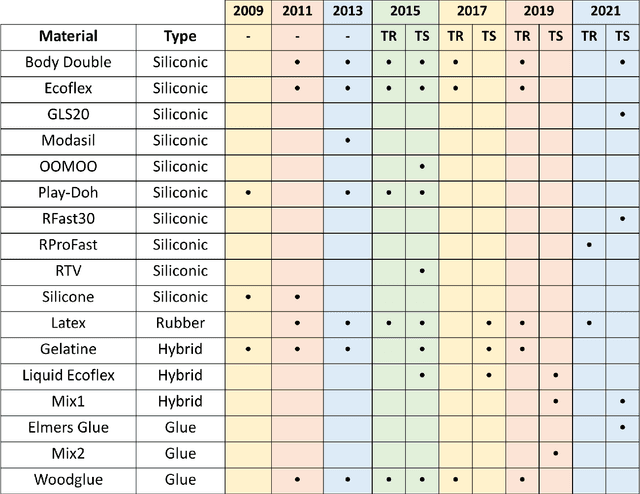
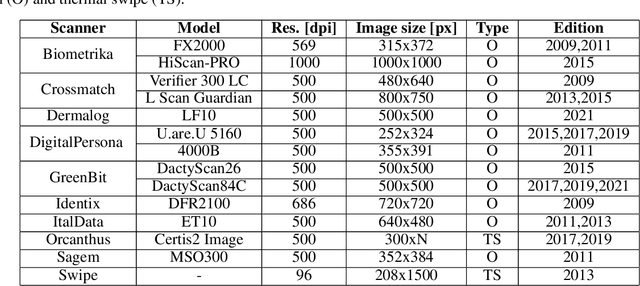
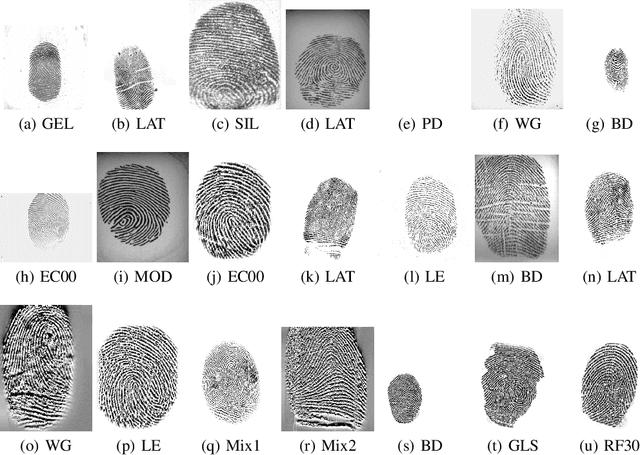
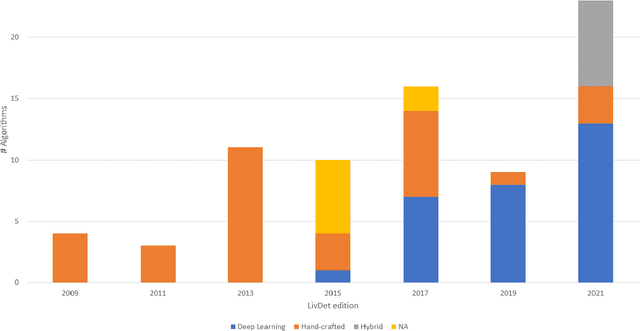
Abstract:Fingerprint authentication systems are highly vulnerable to artificial reproductions of fingerprint, called fingerprint presentation attacks. Detecting presentation attacks is not trivial because attackers refine their replication techniques from year to year. The International Fingerprint liveness Detection Competition (LivDet), an open and well-acknowledged meeting point of academies and private companies that deal with the problem of presentation attack detection, has the goal to assess the performance of fingerprint presentation attack detection (FPAD) algorithms by using standard experimental protocols and data sets. Each LivDet edition, held biannually since 2009, is characterized by a different set of challenges against which competitors must be dealt with. The continuous increase of competitors and the noticeable decrease in error rates across competitions demonstrate a growing interest in the topic. This paper reviews the LivDet editions from 2009 to 2021 and points out their evolution over the years.
Fingerprint Presentation Attack Detection utilizing Time-Series, Color Fingerprint Captures
Apr 08, 2021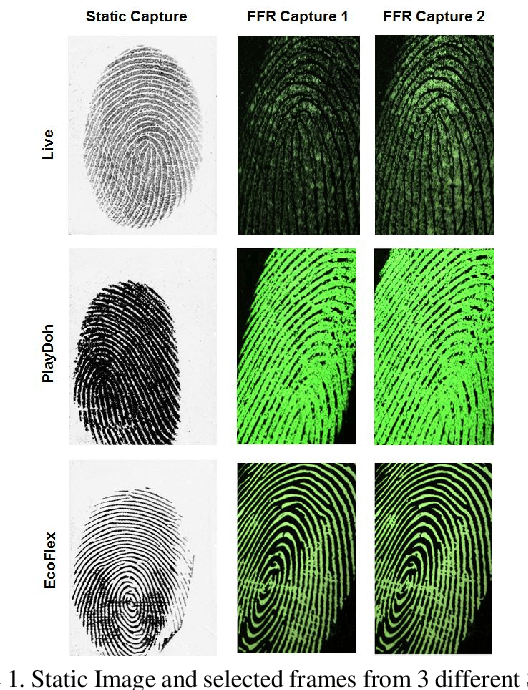
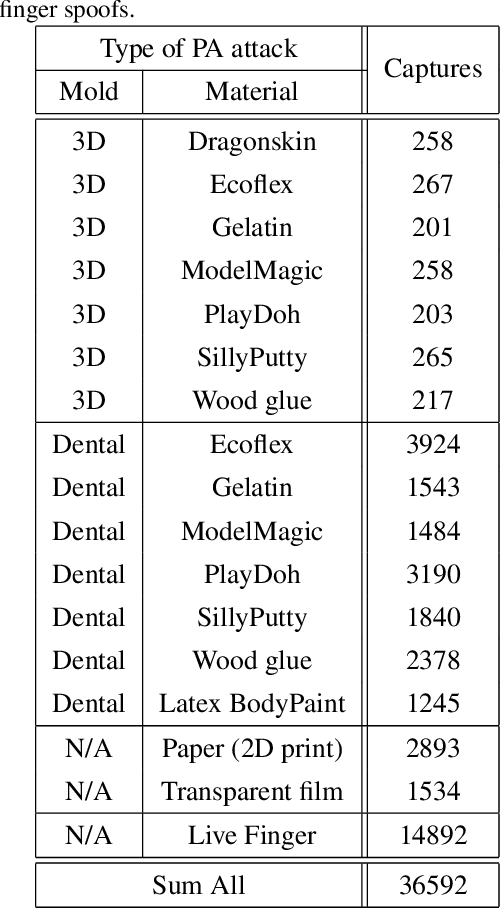
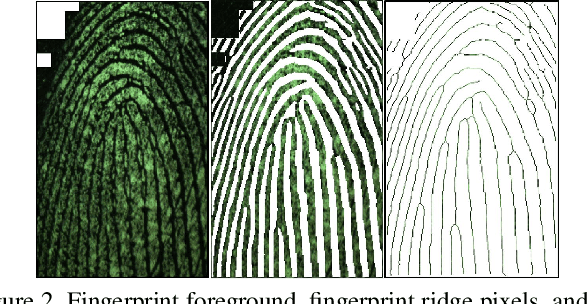
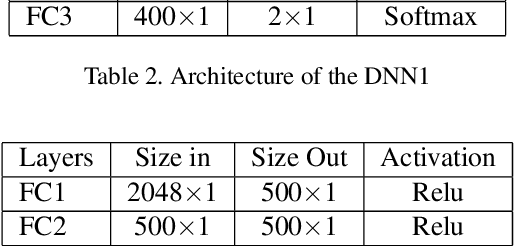
Abstract:Fingerprint capture systems can be fooled by widely accessible methods to spoof the system using fake fingers, known as presentation attacks. As biometric recognition systems become more extensively relied upon at international borders and in consumer electronics, presentation attacks are becoming an increasingly serious issue. A robust solution is needed that can handle the increased variability and complexity of spoofing techniques. This paper demonstrates the viability of utilizing a sensor with time-series and color-sensing capabilities to improve the robustness of a traditional fingerprint sensor and introduces a comprehensive fingerprint dataset with over 36,000 image sequences and a state-of-the-art set of spoofing techniques. The specific sensor used in this research captures a traditional gray-scale static capture and a time-series color capture simultaneously. Two different methods for Presentation Attack Detection (PAD) are used to assess the benefit of a color dynamic capture. The first algorithm utilizes Static-Temporal Feature Engineering on the fingerprint capture to generate a classification decision. The second generates its classification decision using features extracted by way of the Inception V3 CNN trained on ImageNet. Classification performance is evaluated using features extracted exclusively from the static capture, exclusively from the dynamic capture, and on a fusion of the two feature sets. With both PAD approaches we find that the fusion of the dynamic and static feature-set is shown to improve performance to a level not individually achievable.
* 8 pages, 3 figures, ICB-2019
Iris Liveness Detection Competition (LivDet-Iris) -- The 2020 Edition
Sep 01, 2020
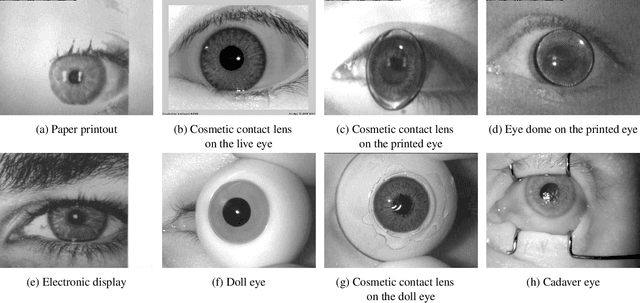


Abstract:Launched in 2013, LivDet-Iris is an international competition series open to academia and industry with the aim to assess and report advances in iris Presentation Attack Detection (PAD). This paper presents results from the fourth competition of the series: LivDet-Iris 2020. This year's competition introduced several novel elements: (a) incorporated new types of attacks (samples displayed on a screen, cadaver eyes and prosthetic eyes), (b) initiated LivDet-Iris as an on-going effort, with a testing protocol available now to everyone via the Biometrics Evaluation and Testing (BEAT)(https://www.idiap.ch/software/beat/) open-source platform to facilitate reproducibility and benchmarking of new algorithms continuously, and (c) performance comparison of the submitted entries with three baseline methods (offered by the University of Notre Dame and Michigan State University), and three open-source iris PAD methods available in the public domain. The best performing entry to the competition reported a weighted average APCER of 59.10\% and a BPCER of 0.46\% over all five attack types. This paper serves as the latest evaluation of iris PAD on a large spectrum of presentation attack instruments.
 Add to Chrome
Add to Chrome Add to Firefox
Add to Firefox Add to Edge
Add to Edge